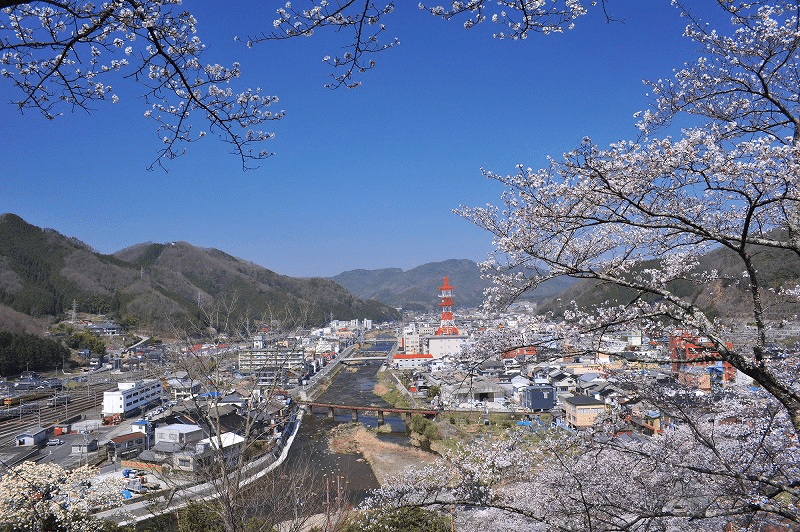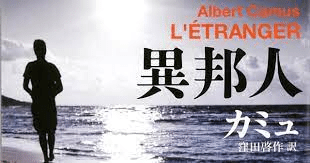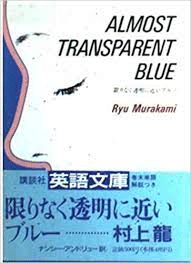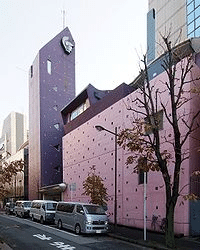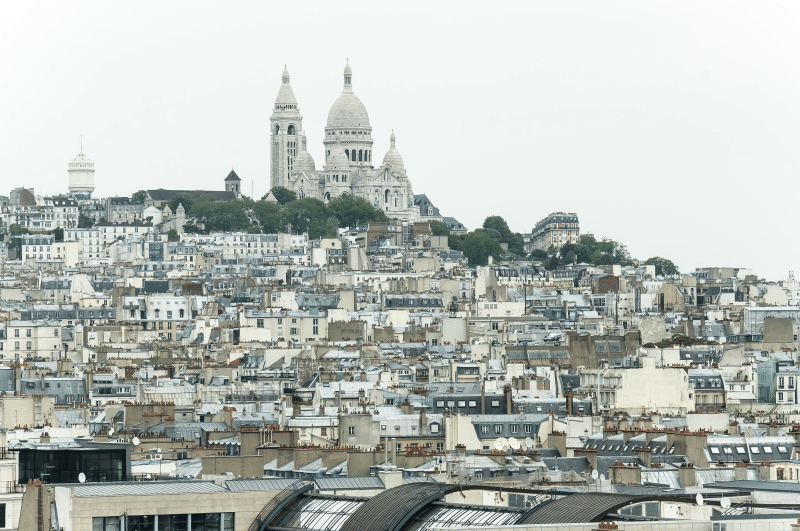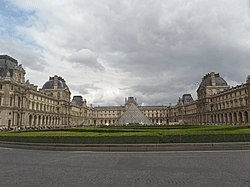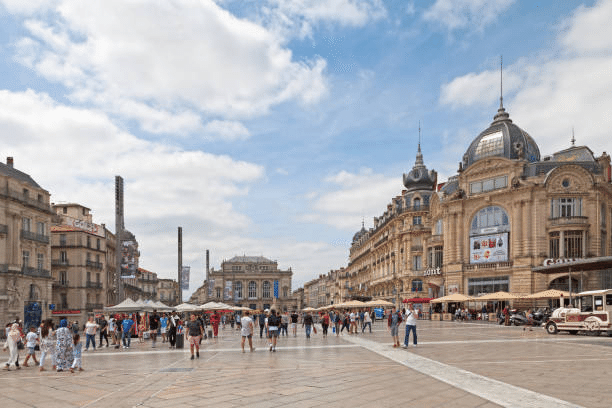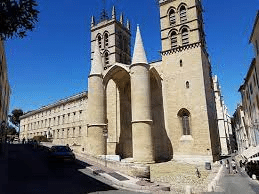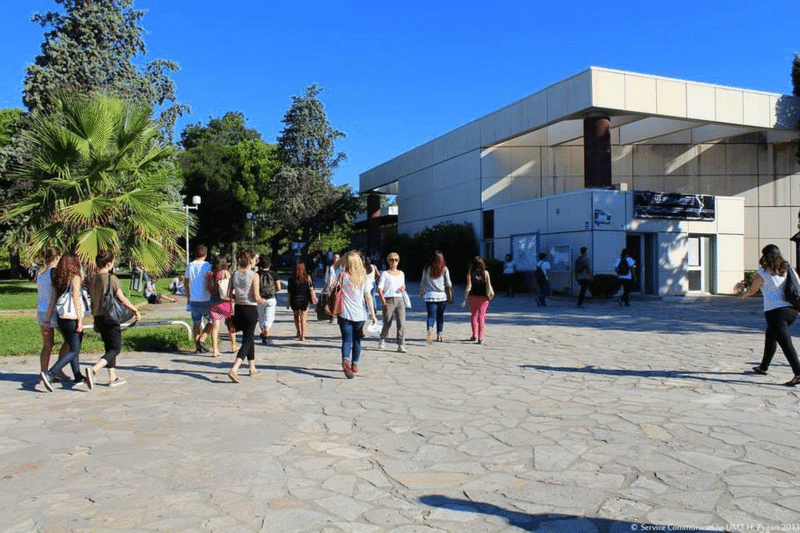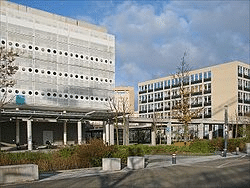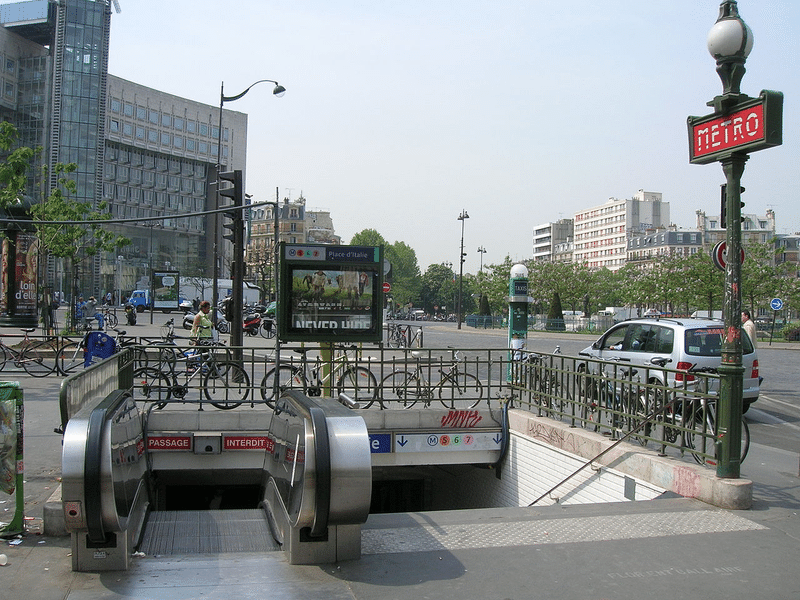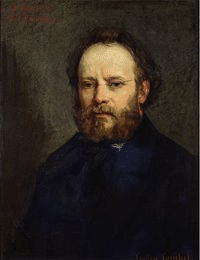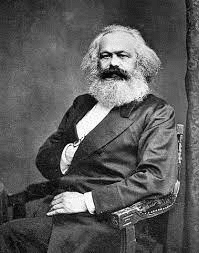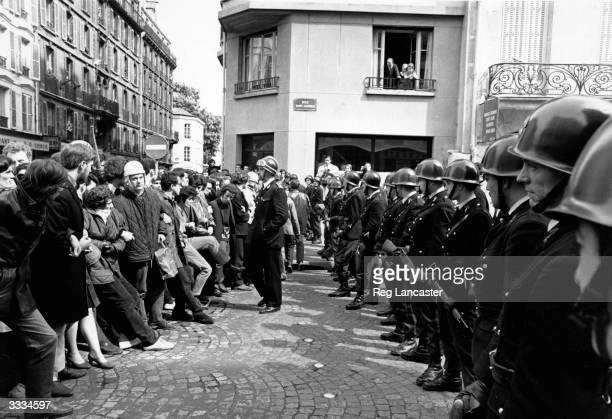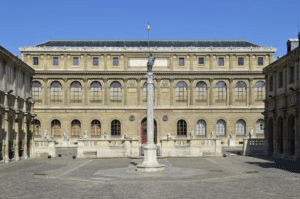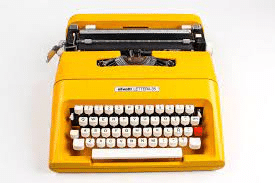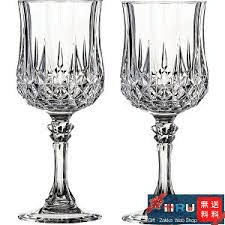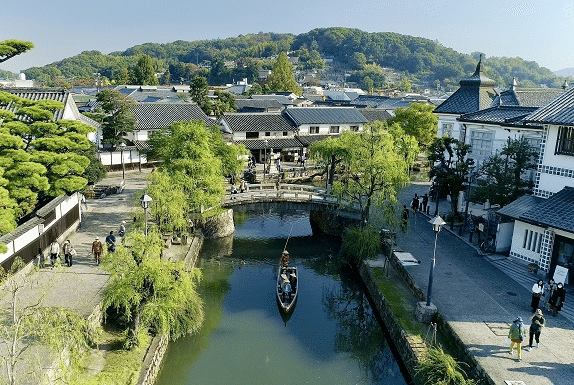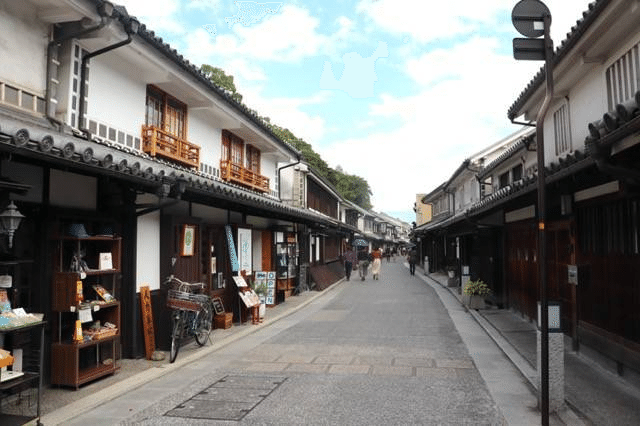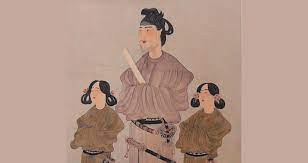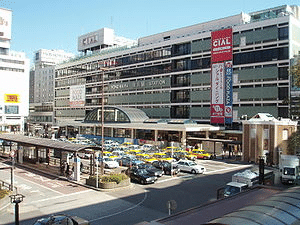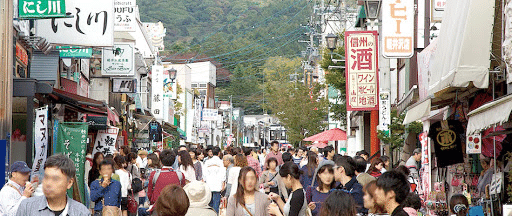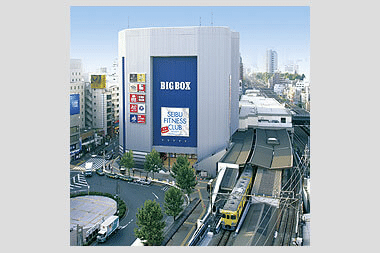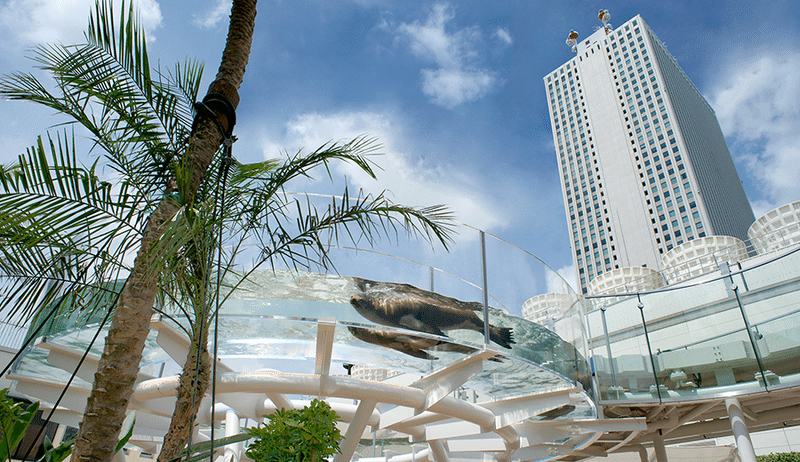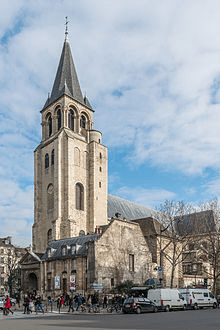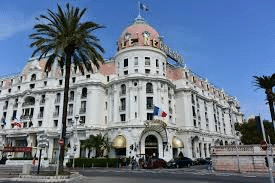High school spring break saloon
I was born and raised in Niimi City, at the foot of the Chugoku Mountains, about an hour by express train from Okayama City towards the Sea of Japan. During the spring break between my second and third years of high school, I went cycling around half of Shikoku with a friend.
Niimi City Photos ↓
In those days, there was no Seto Ohashi Bridge, so I took a ferry from Uno Port to Takamatsu to cross Shikoku. I crossed the Shikoku Mountains, went around the Pacific coastline to Kochi City and Tosashimizu City, then went along the coast to Ehime Prefecture, went around Uwajima, Matsuyama, and Niihama, and returned to Takamatsu, the starting point of Shikoku. I left my bike there, said goodbye to my friend who was going to Shodoshima, and crossed over to Awajishima. I made friends with a female university student at a youth hostel on Awajishima, and we toured the island together.
As a high school student, I was constantly thinking about the meaning of my existence and the meaning of life, and I was thinking of going to college to study philosophy, because I wanted to find some kind of answer to such fundamental questions as the meaning of my life and existence.
Meeting with French philosopher Albert Camus
She was a university student born in Tokyo and found me, a high school student from the countryside, interesting and talked to me about all sorts of things. She recommended that I read "The Myth of Sisyphus" by Albert Camus. Albert Camus was a French writer who returned from Algeria, and his ideas were called "the philosophy of the absurd."
Albert Camus photo
The idea written in the myth of Sisyphus is simple, it is a nihilistic idea that human existence has no meaning, that we are nothing but an absurd existence repeating meaningless things. Nietzsche, a 19th century philosopher who is also classified as an existential philosopher, left us with the famous words "God is dead." In other words, if there is no absolute God that serves as the basis of existence, then there is nothing that gives meaning to my existence.
Camus' novels "The Stranger" and "The Plague" depict people living at the mercy of absurd situations, but what I read in these stories is the atmosphere of the postwar era when prewar morals were destroyed. On the way back from the funeral of his mother who died in a nursing home, the protagonist of "The Stranger" goes to the beach to enjoy the sun and light, enjoys bathing, has sex with a female colleague he meets by chance on the beach, and then gets into a fight with a young Arab man he meets by chance and kills him.
In court, he is not only displeased with the fact that he killed an Arab man in a fight, but also with his extremely immoral behavior of playing at the beach and having sex with a female friend who was not his lover on the day of his mother's funeral, without wearing mourning clothes. Moreover, when the judge asks him why he killed the man, he answers "because the sun was too bright," showing no remorse whatsoever, and he is sentenced to death.
The day before his execution, a pastor comes and tries to get him to confess, but he refuses. His mind is not disturbed. It is described how he looks at the stars from the window of his cell and hears the prison siren. Rather than the fear, anxiety and despair of his upcoming execution, he feels the silence of the night, the comfort of the warm, sweet air, the smell of the sea and the beautiful starry sky, and feels the joy of life in them.
Reading this passage, it is a lyrical description that seems like a hymn to life, a hymn to the Mediterranean. It seems to be saying that our lives, which should be meaningless after God has disappeared, are actually beautiful and full of joy every moment. Nihilism, which is Christianity's definition, actually becomes a hymn to life.
Albert Camus The Stranger
The sunlight, the sparkle of the sea, the soft skin of a woman, her breath, the trees swaying in the breeze - everything makes you feel the joy of life. Breaking away from eternal life and universal meaning, life is beautiful and full of joy, and every moment is worth living. The one who makes that decision is not God or eternity, but a young man who will be executed tomorrow. The judge declares the protagonist, a young man who lives the joy of life, to be immoral and sentences him to death.
From Albert Camus to French Literature
Rather than being a philosophy of the absurd, this novel is a reflection of an era in which pre-war values were crumbling and new values were emerging in Europe, America and Japan.
Camus was one of the French existentialists, a major trend in global thought from the postwar period until the 1970s, and was praised alongside fellow Frenchman Jean-Paul Sartre. At the time, French thinkers were at the forefront of the world.
In addition to Camus and Sartre, Michel Foucault, Georges Batalhull and other authors were read by young people, especially students.
As a high school student, while reading Camus and Sartre, I came to believe that my existence and life had no meaning, that the world existed in an absurd way, that I was a meaningless existence thrown into the universe by chance, worth no more than a rock.
At the same time, he was absorbed in French literature, starting with Camus and Sartre, and including Rimbaud, Baudelaire, and Rousseau, Russian literature including Dostoevsky, Tolstoy, and Turgenev, and American literature. He also read a great deal of modern Japanese literature.
Dropouts and the 1970s
By the end of the summer vacation in my third year of high school, I no longer went to school, but instead spent my time reading literature books and wandering the mountains.
One day, my high school called my house and my parents found out that I hadn't been going to school. My teacher told me that if I missed one more day, I wouldn't be able to graduate, so I went to school just to graduate.
Since I had no reason to stay in the countryside, I took the university entrance exam and entered a university in Tokyo, but soon dropped out. After that, I earned a living by working part-time and broadened my reading horizons. My life of reading, music, movies, and part-time work began.
At that time, it was the waning days of the 1970 Security Treaty, university conflicts, the return of Okinawa to Japan, and the Vietnam War, and there was a strong anti-American imperialist sentiment among students and young people, who supported French humanitarianism as an antithesis to that.
It was around this time that author Ryu Murakami published "Almost Transparent Blue," a novel depicting the young people of the time against a backdrop of drugs, sex, and rock.
I was also drifting through the town with students, retakers, dropouts, and rock band members, breathing in the atmosphere of the times and the world of poetry, novels, and music.
Ryu Murakami: Almost transparent blue
He never thought much about his future, but when asked what he wanted to do in the future, he answered that he wanted to become a French translator and interpreter. He studied French at the Athénée Français in Ochanomizu, where postwar writers such as Hideo Kobayashi, Chuya Nakahara, and Ango Sakaguchi, and prewar writers such as Yumeji Takehisa, Junichiro Tanizaki, and Yuzo Yamamoto attended on an irregular basis.
I no longer gave deep thought to the meaning of life or my purpose in life, but instead drifted through the times and lived the excitement of an imaginary world.
Athénée Français
The path to studying in France
A few years passed, and my classmates and those who had retaken entrance exams all graduated from university and got jobs. I was left behind, and I was gradually pulled back into the real world from the world of dreams and imaginary excitement, and began to think about what I wanted to do with my future.
I tried writing novels and poetry, but I only felt the overwhelming power of the world of emotions I was immersed in, and the world I created was far too meager. I never thought I would become a poet or a novelist.
I was serious about becoming a French translator and interpreter, so I began attending Athénée Français seriously.
A friend I met at a part-time job recommended that I go to France. He was working part-time while working at a factory, and after graduating from a night school at a university, he was studying abroad in London for a year and then returning to England.
I thought, "Yes, I'll go to France." I decided to go to France if I could save 1 million yen by working part-time. I thought that if I stayed in Paris for about a year while working part-time, I would be able to speak French.
At the time, I was living in Asagaya with my younger sister, who had graduated from junior college and was working for a listed company.
Asagaya South Exit Shopping Street
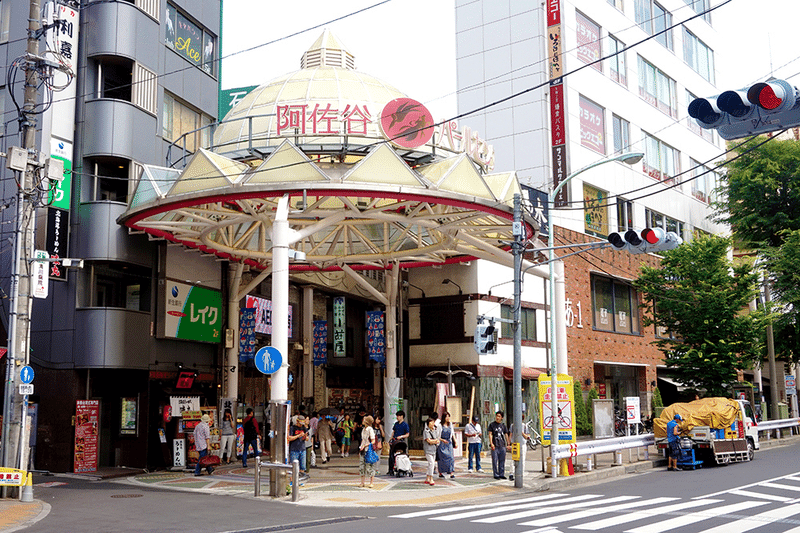
I told my sister that I was going to France in six months and encouraged her to return to her hometown. She was also working in Tokyo, relying on me, so she chose to return to the countryside rather than stay in Tokyo alone.
I went back home to tell my parents about it. My father was happy for my sister, but also worried about me, so he agreed to pay for my study abroad in France.
My sister returned to the country and I went to France. I was then 24 years old.
Summer in Paris, 1978
I arrived in Paris in the middle of the night in late June. As I entered Paris by taxi from Charles de Gaulle Airport, the illuminated Sacré-Coeur Basilica, perched on the hill of Montmartre in the north of Paris, caught my eye.
I realized that I had come to Paris. I remembered the poem by Sakutaro Hagiwara, "I want to go to France, but it's too far away. I'll at least put on a new suit and go out whenever I feel like it." I was moved by the fact that I had come to France, a place that the Symbolist poets had dreamed of but never came to.
The Sacré-Coeur Basilica stands on the hill of Montmartre in the north of Paris.
In Paris, I took a three-month summer course in French for foreigners (commonly known as the Foreigner Course) at the Sorbonne University of Paris. For the first month, I attended classes but couldn't understand anything. After about a month, I suddenly started to understand the lectures. It was a strange experience. Until then, I had only heard an endless string of sounds, but the French the teacher was speaking became words and jumped into my ears. It was the first time I understood French as French, not as a translation into Japanese. Apparently I'm not the only one who suddenly begins to understand a foreign language one day; I've heard many people have had the same experience. However, there are many words whose meanings I don't know, so I can only understand the gist of it. I have no choice but to study steadily.
In between classes, I walked around the city of Paris and frequented art museums. Until now, I was familiar with literature, music, and movies, but I didn't have many opportunities to experience visual art such as paintings. France is a treasure trove of art museums, and there are almost always posters of art exhibitions at the entrances of cafes and restaurants. There are also many posters of art exhibitions at subway stations. I became interested and started going to museums and art exhibitions.
The Louvre Museum + the pyramid at the entrance
I studied with determination. Thanks to that, by the end of the three-month course, my French had improved considerably, but I was exhausted, caught a cold, and left Paris half dead. Paris is dry in both summer and winter. The dry air of Paris does not have a good effect on me, whose bronchi are not very strong.
Learn French in Montpellier, Southern France
I was so weak that I was reluctant to move around on my own, so M, a Japanese student from my class in Paris, accompanied me to my next study abroad destination, Montpellier in the south of France.
The central square near Montpellier train station
His Japanese friend K lived in the Regi Rondelles (Tsubameso) , which was very close to the campus of the Faculty of Humanities at Montpellier University, so I rented a room from him and lived there. The campus of Montpellier University is divided into four parts. The campus of the Faculty of Humanities where I will be attending, the Faculty of Science and Technology right next door, the Faculty of Law and Economics and the Faculty of Medicine near the old town.
The University of Montpellier has the longest tradition of having a medical school, and both François Rabelais, who wrote the medieval tale of Carganchua, and Nostradamus, author of the prophetic book Les Siecles, which was also published in Japan under the title The Prophecies of Nostradamus, studied there.
University of Montpellier, School of Medicine
In France, the French Revolution occurred in 1789, and the First Republic was established, but after that, there were repeated restorations of the monarchy and the establishment of the Napoleonic Empire, and the Third Republic was established after World War II. The Third Republic provided generous support for education, and tuition fees at national universities are almost free. The cost of school cafeterias, which provide lunch and dinner, is shared between students and the government. Students can purchase up to 60 tickets per month by showing their student ID cards.
Montpellier University Faculty of Humanities Campus
The student dormitories are also good. The rent for the Resilondel where I lived was 400 francs (1 franc = 50 yen at the time), which was about 20,000 yen, and included a bathroom and kitchen, but the student dorm was 200 francs (about 10,000 yen) and the kitchen and shower were shared. I remember that the apartment called Radius, which looked like it could fit 2-3 people in the room next door, was 800 euros (40,000 yen).
When I was in high school, the annual tuition fee at a Japanese national university was 30,000 to 50,000 yen, and at a private liberal arts university it was 100,000 to 200,000 yen. At that time, the tuition fee at a national university in both France and Japan was almost free compared to today.
In the 50 years since then, tuition fees at Japanese universities have increased tenfold, and as of 2019, French national universities have also begun charging hundreds of thousands of yen in tuition fees. Private universities have also appeared in France, where the children of wealthy families have to pay high tuition fees. However, compared to the United States and the United Kingdom, tuition fees at French universities are overwhelmingly cheaper.
I had a fever, similar to what you might expect from a cold, so I went to the hospital at Montpellier University, got examined, got some medicine, and rested for a few days, after which I recovered.
After going to university and completing the enrollment procedures, I decided to attend a year-round French course (foreigner course) at the Faculty of Humanities of the University of Montpellier. In addition to French, there were French art, geography, history, literature, etc., which was about the same number of classes as university classes.
There were two other Japanese students in the same class. One was a fourth-year student in the French Literature department at the University of Tokyo named T. She had spent a year wandering around Montpellier before joining a major newspaper company. The other was a woman who seemed to have graduated from Keio University, but she disappeared as soon as class was over, so her identity was a mystery to me.
Student life in Montpellier was surprisingly enjoyable, and the year passed by in an instant. By June of the following year, I had successfully passed all exams in all subjects and had become quite fluent in French.
University of Montpellier Admission
As I was preparing to return to Japan, K, the Japanese man my age who introduced me to Resilondel, asked me if I was going to go to university. At the time, he was a first-year student at the Faculty of Humanities at the University of Montpellier.
Montpellier University Humanities Campus
Normally, in order for a Japanese person to enter a university in France, they would present their Japanese high school graduation certificate, take a French language test at the French Embassy in Japan, and be allowed to enter if they were deemed to have sufficient language skills to keep up with classes at a French university.
I had only asked my father to cover the costs of studying abroad for one year, so I had no desire to go to university and go back to Japan, take the embassy exam, and then come back to France.
However, according to K, if I submitted my application to the University of Montpellier, the university would administer the French language exam.
I submitted my application to the University of Montpellier at the university office. After that, the university contacted me about the date and time of the French language exam, which I took. I was allowed to enroll in September on the condition that I take supplementary French classes during the summer vacation.
I wrote a letter to my father explaining the situation. He wrote me back and said he would take care of me until I graduated from college.
In September 1979, I became a student in the Department of Sociology at the Faculty of Humanities at the University of Montpellier. At the age of 17, I was introduced to the world of French literature and philosophy through the Nobel Prize-winning French author Albert Camus, and at the age of 25, I became a student at a national university in France.
At that time, there were several dozen Japanese people in Montpellier, most of whom were students in the foreign language program at the University of Montpellier where I had studied the previous year.
They were people who had been sent to study in Japan by Japanese trading companies, the Ministry of Foreign Affairs, banks, etc., or people who had studied abroad after graduating from French literature departments at Japanese universities, and returned to their home countries after about a year.
The majority of students in this foreign course were from the United States, followed by Japan, but the rest came from a variety of countries, including the UK, Germany, Switzerland, Eastern Europe, South America, and Korea.
Students at the university came from a much wider range of countries, including Algeria, Morocco, Tunisia, Mauritius, Madagascar, India, Egypt, Iran, Yemen, Jordan, Lebanon, Yugoslavia, most of Black Africa, South America and around the world.
The year I entered university, O, who had dropped out of a Japanese university, entered the same first year of the sociology department as me, and there were two other Japanese students in the economics department and the medical department. K, mentioned above, was in his second year of the sociology department.
K returned to his home country without graduating, but the Japanese students from the Faculty of Economics and the Faculty of Medicine graduated and returned to their home country a few years later.
Other than that, I, who had completed my master's degree in philosophy at Waseda, was enrolled in a doctoral program in philosophy, and N, who had received a scholarship from the French Literature Department at the University of Tokyo, was enrolled in a doctoral program in French Literature. N always studied, but sometimes we would play poker at night. I's family seemed to be rather wealthy, so he would often gather Japanese people together and have fun.
O, a Japanese student in my class, was ranked number one in his prefecture in a mock exam in junior high school and graduated from one of the top high schools in Japan. He had obviously planned to go to Tokyo University, but he got too involved in sports club activities in high school and was the only student in his class who failed the entrance exam. He enrolled in a private university but dropped out and came to France after studying at Athénée Français for a year, just like me. He came to Montpellier at the same time as me and studied French in the class next to mine.
There were about 20 students in the Department of Sociology at the University of Montpellier. Classes are based on a credit system, with compulsory and elective courses, and 90-minute classes are worth 1 credit, and 180-minute classes are worth 2 credits. Once you have earned the necessary credits, you will receive a graduation certificate.
The new semester begins in September, with early exams in December and final exams in June. If you pass the written exam, you will have an interview. Students who do not pass the final exam after the end of the semester will have a make-up exam in early September after the summer vacation, and can try again. If you do not pass the make-up exam, you can retake the course the following year and take the exam in the same way.
In my first year, I only passed about half of the subjects at the end of the final exams, so I gave up my summer vacation and studied in the library. I took the re-exams in September, but failed several subjects, so in my second year, I took second-year classes and the first-year subjects I had failed.
At the end of my second year, I failed a few subjects in the final exam in June, but passed the retake in September. However, my folklore teacher, who I had been holding on to since my first year, did not give me a passing grade in the retake in my second year, so I was forced to retake one of my first year subjects in my third year. In my third year, I passed all of my subjects in the final exam in June, but I failed folklore again, which I had been holding on to since my first year, so I spent my third year summer vacation holed up in the library studying just for that subject. I read about 10 related books, wrote a resume, made my own comments, and took my sixth exam in this subject in perfect condition. Thanks to this, I passed in September with a fairly good score.
By this time, I had a lot of free time, so in between studying at the library, I played tennis on the university courts or went to the nearby beach with friends, so I got a tan and had a fun summer vacation.
Graduation from university and progression to a master's degree at the University of Paris
After obtaining my bachelor's degree in sociology, I decided to go on to a master's degree at the University of Paris. My father was also happy that I, who had dropped out of high school, was graduating from college in France and going on to a master's degree at the University of Paris, and he continued to pay for my study abroad expenses. I went on to a master's degree in sociology at the University of Paris 10 Nanterre. O also went on to the same university in the same department.
University of Paris 10 Nanterre Campus (now the West Campus)
In 1981, Socialist François Mitterrand became president and implemented a price freeze and banned rent increases in order to protect the lives of the poor.
As a result, there is a shortage of rental properties in Paris and it is difficult to find a place to live. When I found a cheap room in the newspaper's vacancy announcement, I went to look at it, but there were already 20 to 30 people there. I went to look at it twice, but I gave up because I thought it was impossible, and I stopped looking for a room after that.
I started living in a rundown 30-franc ($15) hotel with no bath, shower, kitchen and shared toilets.
It's a big change from the comfortable life in Montpellier. I have to take the metro to go to the cafeteria, and the quality of the food is far worse than in Montpellier.
Unable to cook, I made do with French bread and wine for dinner for days on end, and I began to feel unwell and cough.
In Paris in October, the air is dry and it feels cold rather than just cool.
About a month later, through the introduction of U, a Japanese friend who had been in the same class as me during the Sorbonne summer course, I was able to rent a one-room apartment with a toilet in Paris, but my coughing continued.
It was very cold in Paris that year and it snowed a lot.
Besides attending university, I read materials at home and frequented budget cinemas and art museums. I gradually became familiar with paintings, and confirmed what I had learned about art history at university at art museums. I also became accustomed to the Renaissance art of Italy, the Netherlands, and other countries that preceded the Golden Age of French painting in the 19th and 20th centuries.
I was absorbed in literature and music, immersed in that world, living and breathing it as reality, but paintings were a whole other world. They became objects to be appreciated from a little distance. Looking at paintings became a comfortable pleasure.
Struggling with the master's thesis
Classes have started. I live near Place d'Italie in the 13th arrondissement of Paris (Place d'Italie), which is in the southeast lower right part of Paris. The University of Paris 10 Nanterre campus that I enrolled in is in Nanterre, in the northwest upper left of Paris, on the outskirts of Paris. It takes about an hour by public transport.
I took two 180-minute classes that gave me two credits, so I only had to go to the university twice a week for lectures, and the rest was preparing for my master's thesis. A master's thesis must be written on a specific topic, and it must be about 100 pages long. I avoided topics that required fieldwork and chose a topic that could be completed by simply browsing related books.
Place d'Italie
After the French Revolution in 1789, France became a republic (capitalist) of liberty, equality, and fraternity. However, in the 19th century, as workers' lives became increasingly difficult, socialist thinkers such as Proudhon and Fourier began to think about and work to alleviate workers' poverty. Their ideas influenced Marx and Engels, and would develop into Marxism-Leninism and communism.
Proudhon painted by Courbet
Marxism did not take root in France, and French socialism, which also contained anarchist tendencies, was called utopian socialism and developed into the French labor union movement (syndicalism).
Even after the 20th century, labor unions in France continued to be active and separate from political parties, and as a result, France became a country with strong labor unions.
Marx↓
In 1908, the French General Confederation of Labour (CGT) proclaimed the Amiens Charter, breaking away from Marxism and declaring its own course independent of political parties.
My theme was the anarchist ideology of the French trade union movement "Sundayism" after the Amiens Charter. Even to me as a foreigner, it seemed like a very French theme and interesting.
The library attached to the Nanterre campus was quite well-equipped, and I was able to find most of the materials I needed there. Although I only had to attend lectures twice a week, I actually went to the library to read and borrow materials, so I went to the university four or five times a week.
Nanterre is the university where the May 1968 revolution began. In Japan, students were shouting anti-imperialist slogans in the 1970 Security Treaty crisis, but in France, students at Nanterre University started to stir up trouble, drawing in workers and developing into a general strike. It was an explosion of rebellion against the Indochina War, the Vietnam War, old values, and the system.
May 1968 Paris Revolution
Incidentally, as of 2021, Macron, the current president of France, also graduated from the University of Paris Nanterre. In other words, he is my junior. He graduated from university and went on to study at a Grande École, where elites study while receiving a salary. France has established the Grandes Écoles, which have extremely competitive entrance exams, separate from the university system, as institutions to train a small number of elites at state expense. Of France's postwar presidents, the only university graduates are the Socialist Mitterrand and Sarkozy, the son of immigrants; all other presidents have graduated from a Grande École. The Grandes Écoles have a limited number of students, far fewer than those at universities such as the University of Tokyo in Japan.
The École Nationale Supérieure des Beaux-Arts de Paris, from which our contracted artist, Michel Henry, a master of 20th century French art, graduated, is also one of the Grandes Écoles and a school that trains art elites.
Beaux Arts along the Seine
Carlos Ghosn, who is in the news now, graduated from a Grande Ecole, a science mining school with an enrollment of about 50 students. He is an elite among elites, and has been trained to the max. It would be a piece of cake for him to manipulate the stupid Nissan employees who are enjoying the elite atmosphere at a Japanese university.
The National School of Mines in Paris
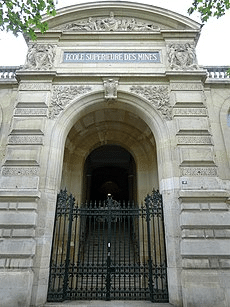
When I was in my third year at the University of Montpellier, a professor who taught an interesting class on ideology was a graduate of the University of Paris Nanterre, so I decided to do my master's there as well.
O., who was in the same class at the University of Montpellier, also went on to study at Nanterre, where Jean Baudrillard, known as the author of semiotics such as "Consumer Society," was a professor there, so O. took classes from Jean Baudrillard and received guidance from him on his master's thesis.
Classes ended in June of the following year, and I passed my final exams with good grades, leaving only the thesis to be submitted in October.
I returned to Japan temporarily in the summer, typed up the rest of my thesis at my parents' house, and returned to Paris in September.
When I had my master's thesis supervised by Madame Diane look at it, she said that the content was good, but there were problems with my French. I tried to include as many citations as possible and reduce my own writing.
A lecturer at the Faculty of Economics at the University of Montpellier who was a good friend of mine had moved to Paris at the time, so I contacted her and asked her to proofread the French for my master's thesis.
She invited me to lunch at her home, where I ate with her mother and her brother. Her brother was a French diplomat. Although my cough had subsided, I was still suffering from bronchitis and was always exhausted. After the meal, I was allowed to sleep in her bed.
During that time, she corrected the awkward wording in my paper and made it into easy-to-understand French.
Olivetti typewriter
I spent the next few days at my Olivetti typewriter, typing up the thesis and submitting it to Madame Diane.
I had an interview in October, and Madame Diane and the Dean interviewed me. She gave me an excellent rating. The Dean said, "You know how to make books speak." In other words, she pointed out that I quote too many things, but I still don't know if she praised me or warned me. French people are good at diplomatic language.
Let's go back to Japan
While I was waiting for my interview after submitting my master's thesis, I got a call from a friend. A professor of sociology from a Japanese university was looking for an interpreter to visit a university in France, and I immediately said yes.
He is a professor of French sociology, but he cannot speak French at all. We had plans to show him around various universities and have him talk with professors from French universities, and I was his guide and interpreter.
He was a good and nice person, but he would say things that were off the mark and behave rudely, so translating them verbatim was quite a pain, and I ended up getting angry.
From this week-long experience, I realized that interpreting is not for me, and that I want to say what I think and want to say. I came to France to become an interpreter/translator, but when I return to Japan, I want to do something other than interpreting.
He offered to introduce me to a position as an assistant professor at a Japanese university, but I was exhausted and in no condition to seriously reply. I lacked the gentleness necessary for interpreting, and I didn't think I could be a university assistant.
By the way, O finished his master's degree at the same time as me, then went on to a doctoral course, and returned to Japan a few years later. He initially worked as a lecturer at a junior college in the Kanto region, but was scouted by a prestigious private university in the Kansai region and became a lecturer there. Recently, he has also been serving as the president of a Japanese-French academic society.
He studied well, had a good academic mindset, and liked research. I studied for exams as a matter of obligation, and I didn't have as much motivation to study as he did. I had known him for many years, and I thought that I was not suited to being a scholar, and that even if I did become a scholar, I would not be able to beat him. I decided to return home, thinking that I would not become either an interpreter or a scholar.
I moved out of my apartment in October and returned to Japan. When I got back to my parents' house, I collapsed and slept for three days straight.
I went to a local clinic to have my chest checked, and was told that my bronchitis had cleared up and that I would get better if I ate well and rested, so I stayed at my parents' house and rested for about two weeks, while my father asked local members of parliament and others to find me a job, but was unsuccessful, so after about a month I left my parents' house and returned to Tokyo again.
In the cold weather of November, I started living in a 6-tatami apartment with a kitchen in Tokyo. I was no longer a person who lived for unrealistic impressions, and I started looking for a job to live as a member of society. I applied to French companies such as Michelin and Hermes, as well as to journalism, which offers mid-career employment, but I was unsuccessful.
First job at age 30
In March, I found a job advertisement in the newspaper from a small import company of interior and hobby goods, applied, and got a job at the company, which had fewer than 50 employees in its entire group, starting work in April.
For the first three months, I was assigned to warehouse management and delivery, then I was transferred to sales. Apart from inheriting a large number of clients from my boss, I also worked on new business development by cold calling.
I thought I was not good at sales, but when I tried, I managed to get some work. There was a French crystal tableware manufacturer, and my company handled their products through one of their clients. When I joined the company, a senior employee I contacted the company, Cristal d'Arques, directly and had me act as an interpreter.
Crystal d'Arques wine glasses
He and his senior colleague, I, won a contract to supply crystal glasses worth about 50 million yen to a retail chain. I was a very unconventional person, and he thought he could do it somehow, so he opened an LC and made arrangements for the import before signing the contract in order to meet the delivery deadline.
The president found out about it and it became a big deal, but we somehow managed to get the contract, complete the delivery, and get the payment. I told him how stressed I was that I felt like throwing up many times, and the president was furious, but I was just an assistant so it was easy for me.
I worked there for about a year, but I couldn't get along with my direct supervisor, so I quit the company exactly one year later. He wasn't a bad person. He was a healthy boy from Waseda University's American University, and his hobbies included triathlons. There was no way he could get along with me, a total humanities dropout with poor physical strength, individualistic, and zero cooperation, but now I can't even remember why I had a conflict with that supervisor.
Let's go home
I was a country boy, but after experiencing many things while living in Tokyo and France, I decided that I had had enough of adventures and it was time to return to my hometown. Dreaming of a normal country life, I got a job at an import/export company headquartered in Kurashiki. Okayama is a production area of rush grass, so the company sold rush grass tatami mats and mats domestically, while also exporting them to the Middle East and importing furniture from Europe and Southeast Asia.
Pictures from Kurashiki ↓
I was happy to be hired, but since I lived in Tokyo, I was assigned to work at the Tokyo branch. After working there for three years, I was promised to be transferred to the import department at the head office in Kurashiki.
The job consisted of loading and unloading furniture, and carrying it in and out of department stores whenever there was an event at the store. It wasn't a very cultural or intellectual job, but rather a job that required physical strength and muscle power.
The branch office employees were all muscular men, and each was given a two-ton truck, which they used to move, load and unload the heavy furniture every day, with no difficulty.
They offered to give me a two-ton truck as well, but I refused.
I went around to furniture stores, mail-order companies, real estate companies, etc., showing catalogs, bringing them to warehouses and trying to sell them. The daily task of loading and unloading heavy furniture was too much for me.
When I told my colleagues that I had been promised to be sent back to Kurashiki in three years, they said, "I was told to go to Tokyo for one year, but I've been here for ten years." Another person said, "I was told to stay two or three years, but I've been in Tokyo for twenty years." I joined the company dreaming of a relaxed, ordinary life as a businessman in the countryside, but somehow I felt that this might not be the case.
At that time, I, a colleague from my previous company who had worked with me to secure the contract for the French company Cristal d'Arc, was working at the Tokyo branch of Nagoya-based company E. E imported cheap toys and miscellaneous goods such as souvenirs and gifts from Taiwan and Hong Kong.
I found a Korean Western doll at a trade fair. It was cheap and had an antique look. I gave him a quote to see if he would like to buy this Korean Western doll. After a while, he said he had found a buyer and placed an order for about 10 million yen.
I believed his promise and proceeded with the import procedure for this Korean doll. I was ordered by the head office to sign a contract with the business partner and told I. I told him to bring the contract on the day that President Y came from the head office in Nagoya, as he would stamp the contract.
I brought the contract to his company that day.
The president was there, but he was absent. President Y had not heard anything about the contract. I was at a loss.
I went to his house and asked him if he had a buyer. He said that the dolls had already been sold so there was nothing to worry about, and I told President Y about it. President Y signed the contract because he thought Mr. Takeda would be in trouble.
After that, I couldn't get many contracts, and my sales didn't increase much. The other salesmen were doing daily work such as moving furniture in and out, organizing the warehouse, and repairing furniture, as part of their sales for wholesale to vendors at department stores.
I suffered from bronchitis in Paris, but it seems I have weak bronchi to begin with, and I started coughing around autumn, probably due to the pressure and stress of work and relationships.
Pictures from Kurashiki ↓
I couldn't transport furniture or hang out with Kinnikuman and the others any longer, and I thought that a normal country life was just a dream, so I decided to quit my job.
At the same time, having quit my job twice in two years, I realized that I couldn't continue working as a salaryman any longer.
Let's start a company
If I can't work as a salaryman, should I do that? I thought the only solution was to start my own company.
At that time, a capital of 3 million yen was required to register a joint-stock company. I consulted my father about it, but he turned me down.
In fact, my younger brother, after graduating from a second-rate university in Tokyo, started his own business instead of getting a job. He failed and his debts were wiped out by my father. After that, he returned home with his wife and children and took over the family business.
My younger brother was causing trouble for my father by not getting a job, and then when I finally graduated from a university in France at the age of 30 and returned to Japan, I was unable to get a job and brought trouble to my father. I felt sorry for my father too.
I thought it was only natural that I would be turned down, but when I got on the train home at Niimi Station, I was so lost that tears came to my eyes.
Later, my mother told me that my father had said, "If I provide the money to start a company and then it goes bankrupt, he (that is, me) will never recover. If he fails on his own, he can get back up again."
I still shed tears when I think about this. When I was in high school, my homeroom teacher, worried about me, went to see my parents. He later told me, "Your parents are too nice."
My mother would sometimes laugh at herself by telling a story about how, "When the teacher at school told the children to bring in a fool, the children brought their parents." Now that I myself am a parent, I understand the thoughts of parents well. My parents are fools and non-resistance. I, too, have now become a doting parent and a non-resistance person.
When I returned to Tokyo, I consulted with I. I asked President Y to take me on. I had only met President Y once to discuss a contract, but he seemed to like me. At the time, President Y's company was profitable.
President Y asked me if I wanted to become an employee, but I had already concluded that I couldn't be an employee, so I declined. We decided that I would handle the products of President Y's company, put a desk in the warehouse of President Y's Tokyo branch as an office, and President Y would invest 2 million yen out of the 3 million yen.
The remaining 1 million yen was resolved when my mother gave me 800,000 yen and a friend lent me 300,000 yen.
We named the company Adeka Co., Ltd. and registered it with capital of 3 million yen. My surname Takeda is written as takeda in the alphabet, and when you flip it over it becomes adekat. When pronounced in French style, the last t is not pronounced, so it is pronounced adekat, not adekat. In other words, the opposite of Takeda is adekat. In French, there is an adjective called adequat, pronounced adekat, which means adaptable or fitting. Takeda is unable to adapt to society and cannot work in a company, but his exact opposite, Adeka, is apparently able to adapt. A friend who understands French used to tease me about my inability to adapt and had a lot of fun with it.
I don't mean to sound sour, but in the current age of 2021, adaptability doesn't seem to be necessarily a good thing. Prince Shotoku proclaimed, "We value harmony." When Francois Mitterrand, who was the president of France in the 1980s, came to Japan, he quoted Prince Shotoku's words and said, "Japan is a country of harmony."
President Francois Mitterrand and British Prime Minister Thatcher
However, because something is not adaptable to reality, sometimes new things are developed, and in the West this is called dialectics. In other words, because there is a conflict, that conflict becomes the driving force to move on to the next step. This is a way of thinking that does not see contradictions and conflicts negatively, but rather sees them as a process of development.
One of the reasons why Japan has been stagnant for 30 years and is still on a downward escalator may be because of the importance of harmony. Being an island nation with no place to escape, with a single ethnic group, single language, single history, and single culture, and an environment where you cannot survive without harmonizing with the surroundings, I think that this matches perfectly with Buddhist thought.
However, there is also the view that foolish peace is better than any noble war. Looking at the chain of conflicts between Israel and Palestine, Ireland and Britain, etc., I feel that the Japanese spirit of valuing harmony without reason cannot be dismissed.
In any case, despite the fact that I create discord on a daily basis with those around me and am treated like a weirdo, I have managed to survive by working in French painting for the past 35 years.
Prince Shotoku↓
The company starts
The company registration was completed on July 18, 1986. I went around selling the products of President Y's company to clients I had done business with when I was an employee and to new clients, but I couldn't sell them. I didn't receive much money, and I was gradually running out of money, but I didn't know what to do. One day in October, M, a colleague from my first company, came to visit me. M was working at a company that imported Italian miscellaneous goods. He left samples and a catalog of the company's imported goods. From the next day, I took the catalog and samples and went around to fashionable flower shops in hotels and retail stores of imported miscellaneous goods. Little by little, I was able to sell enough to make a living.
The products of President Y's company were not selling, and we were only selling products of M's company. Then the relationship with President Y's company gradually deteriorated. I was in a difficult position between me and President Y's company. I would treat me to a meal at a bar once or twice a week to cheer me up. After the new year, I stopped coming to President Y's company and went missing. President Y came out of Nagoya and asked me where he was going, but I didn't know either. President Y invited me again to join S company, but I refused. I helped me, and I probably disappeared because of me, so it was too good for me to get a job at S company as I's successor. I didn't sell S's products, and I was no longer a reliable person, so I refused the invitation to join, and it became uncomfortable to live in the warehouse of President Y's company. I had no choice but to move my desk, phone, and fax to the one-room apartment I was living in, and use my home as an office. Fortunately, I was working at another company and was having a good time. I was glad.
I made a living by selling Italian products from M's company and some products from President Y's company. I also explored new business opportunities. One day, I visited a company called A whose address I found in an interior magazine. It was not a store or an office, but a dimly lit workshop. There were foreigners and a few Japanese people who looked like hippies inside. I felt a little strange, but I tried to introduce my products to them, but the Japanese man refused, saying he didn't need them. I called out to the foreigners inside, "I speak English." The man who seemed to be the boss of the company said, "Comme in," so I went inside and started talking to him.
Meeting with Moshe Meeting with Art
They were Israeli. A Japanese hippie named S. brought back to Japan in England metal pictures (approximately 15cm x 20cm) that were paintings of landscapes and patterns carved into aluminum foil, and when he pasted them on cardboard, put them in standard frames and sold them on the streets, they sold well. S. teamed up with a group of Israelis and started making lots of them. With the money he made, S. bought an old apartment and ran a guesthouse for foreigners. S. was originally a hippie and had no interest in the business itself, so the Israeli group took over the metal picture business. The boss was called Moshe (Moses in Israeli).
Israel ↓
Let me explain a little bit about Israel. As you know, Israel is a Jewish country. Jews are merchants and entrepreneurs, and have an extraordinary desire to do business. They determine what will make them money, find efficient businesses, and do profitable work. When Israeli young people finish their military service, they travel around the world with their backpacks on. They travel around various countries while they are still young. They gain experience and look for business ideas for efficient profit in the future. At that time, Japan was heading towards a bubble economy and prices were high, so Israelis could not stay long even if they came to Japan. So they packed framed metal pictures in their backpacks, spread them out in the downtown area and sold them, making money, and used that money for travel expenses to go on their next trip. They have a lot of vitality.
He bought two dozen Taiwanese glass picture frames from me. He had Israeli salesmen take the framed metal pictures and sell them on the streets of Shibuya, Ikebukuro and other busy areas for about 3,000 yen, but he said he wanted me to help him because he wanted to get out of the street business and sell them in a shop because there were police and gangsters around. He said he wanted to sell not only metal pictures but also reproductions imported from the Netherlands, and that those were his main focus. I accepted and introduced them in the store along with products from M's company and President Y's company. This was the beginning of my dealing in art, even if it was reproductions.
Started importing art
I went around to retail stores in station buildings with replica paintings and hobby goods from Italy and Taiwan. There is a Sotetsu-affiliated station building in Yokohama. As I was walking through the station building, I saw a store selling paintings and art supplies, so I went in and talked to them. An employee was on the phone somewhere, but the president was meeting me, so I was told to come to the head office.
Yokohama Station Shopping Building CIAL
When I went to the head office, it turned out to be the president's home. The company's name was B, and the president was A. President A bought me about 200,000 yen worth of Italian hobby goods. He said that displaying them in the store to add some color would help sell some. He loves to talk, and wouldn't let me go until the evening. When he found out that I could speak French and English, and that I had experience in importing, he asked me to help him import posters, postcards, original prints, and other items from Italy, France, and North America. He agreed to give me a commission of 5% of the import price.
He gave me some addresses and documents. They were companies in Italy, France, and Canada. I immediately wrote letters to those companies and sent them by mail or fax to gather product information. I showed the documents and information sent by those companies to President A, had a meeting, and made the procedures for importing posters, postcards, reproductions, original prints, etc. Company B only had four stores in Yokohama, Kichijoji, Funabashi, and Konandai, so they couldn't sell that much. They would only import once from each export destination. The next import would be in a year or two.
Selling the art and goods I imported myself
President A encouraged me to sell the art goods and artworks I had purchased. He agreed to frame the artworks of his company and lend them to me. Moshe, an Israeli, had also suggested the same thing to me. He also agreed to lend me his car and a saleswoman.
I loaded the framed reproductions from Company B, postcards, and framed reproductions from Moshe's company into the car I borrowed from Moshe, and headed out with Israel Girl. The first place we went was a factory in Kawasaki. During the lunch break, we lined up dozens of framed reproductions with our backs to the factory wall, and the workers who had finished their meals came out to look at them. Next, we went cold-calling at offices and stores, where she pressed the reproductions against the wall and I gave a sales pitch. We did this for about a week, but we only sold one reproduction for 3,000 yen.
Present day Israel
My Israeli girlfriend is the daughter of a good family and her parents are members of the Club Mediterranean. The child of such a wealthy family travels around the world with a backpack and does part-time work as a cold call salesman. I was really impressed by the vitality of Israelis. The team with her was dissolved after one week because of poor sales.
After that, I bought a used small minivan with air conditioning for 150,000 yen. Moshe had gotten information that Karuizawa was selling well. I loaded the minivan with postcards from Company B and a framed copy of Moshe and Company B and headed to Karuizawa. I parked the car in a small space on the outskirts of Old Karuizawa and lined up the copies and postcards next to the car.
Karuizawa Ginza in summer
Since not many people come to this place, I lined up a few framed reproductions in front of a bakery in Karuizawa Ginza, but I was so embarrassed that I returned to my car after about 10 minutes. On the first day, I made several thousand yen in sales. An older woman at a Ramune shop across the street introduced me to a guesthouse in Saku, where I stayed. The sales amounted to about the same as the accommodation fee. The next day, as soon as I parked my car in the same place, a woman popped her head out from the wall and shouted, "If you do business there again today, I'll call the police." I gave up and returned to Tokyo.
On the recommendation of President A, I decided to sell at the Defense Agency's event hall in Roppongi. I met with the person in charge at the Defense Agency and was given a corner at the next event. Since it was indoors, I exhibited original prints, reproductions, and Gobelin tapestries by Mucha that I had imported from Belgium, and was surprised to see that they sold for hundreds of thousands of yen.
That year, an art expo was held in Japan, and French businesses were also there. I got to know a French publisher called CA who deals in relatively inexpensive prints, and took him to the home of President A of Company B. President A kept asking for too much, so CA got upset and the deal fell through, but he was grateful to me and told me to stop by next time I was in Paris.
I told a successful interior coordinator I knew from my time working at a company in Kurashiki that I had started working with French art. She said that an interior coordinator seminar was being held in a newly completed and yet to be released apartment in Akasaka, and that someone might be interested if I displayed French prints. On the day, I displayed prints from Company B in one room. The seminar's lecturer, architect A, saw the prints and said it was a "buffet," showing interest. After the seminar was over, I approached A, praised the seminar, and asked if she liked buffets. A said she liked them, so I told her I had some good work and wanted to show it to her, and she gave me her home address and phone number.
I remembered an original print set of works by 10 famous artists, including Buffet and Brasilier, that I had imported at the request of President A of Company B, and brought it to Professor A. I told him the set was 3.6 million yen, and he haggled a bit but said he would buy it. I spoke to President A, sold it at Professor A's asking price, and we split the profits. Professor A went on to buy several million more, making me a lot of money. After all, it was the time of the bubble economy, and Professor A was making a lot of money by designing homes for the wealthy, advising Tokyu Department Store, and appearing on television.
Exhibition of original prints by French artists
At the end of 1987, I decided to hold an exhibition of original prints borrowed from Company B for one month at the event hall of Sotetsu Shopping Center called Birds in Konandai, where Company B's store is located. I produced a lot of direct mail. In those days, direct mail was also outsourced to advertising agencies and was quite expensive. Since I couldn't keep watch over the store from morning to night for a whole month, I asked a friend to do it for me as a part-timer and somehow managed to hold the exhibition in January.
I handed out direct mail myself at Ofuna Station, where there are many passengers, and posted direct mail in Kamakura, where it seems there are wealthy people. There is a Takashimaya department store next to Konandai Birds, and when I was handing out direct mail in front of it, someone from the department store scolded me. There is a securities company counter across from the fairgrounds, and people who came to buy stocks bought paintings worth hundreds of thousands of yen. In one month, I made sales of several million yen. While posting direct mail in Kamakura, I found a small gallery selling French prints, and we became acquainted, and he taught me a lot about the industry.
Kamakura Station ↓
In 1988, Mr. and Mrs. Y, who owned a building in the downtown area of Akasaka and ran an interior design shop, asked me to help them import Italian furniture and miscellaneous goods directly. We decided to go together in the spring to Milan, Italy, where the largest furniture and hobby goods exhibition in Europe, called Machev, is held every year. I was to receive a commission. We bought goods together in Italy, and also accompanied them on a sightseeing tour of Paris. While in Paris, we also visited the print publisher CA's company and purchased some of his prints.
Mr. and Mrs. Y imported about 20 million yen worth of Italian products, and I also made a lot of money from the commission. Mrs. Y said she wanted to hold an exhibition of the products she had imported, so we ended up borrowing a conference room for free from the Economic and Commercial Section of the French Embassy, which was located in Tameike at the time. My friend N, from my time in Montpellier, was working there, so I asked the Commercial Attaché and he agreed to let me use it. Promoting the sale of French products is part of the duties of the Economic and Commercial Section of the Embassy. He lent it to me under the pretext of exhibiting original lithographs by French artists that I had bought in Paris, and he also allowed me to display some Italian miscellaneous goods as an added bonus.
Held an exhibition at the French Embassy using original French prints procured by the company.
I asked a picture framer introduced by Moshe to frame the original prints I bought from a flight attendant in France, and hung about 20 of them on the wall of the conference room of the Economic and Commercial Department of the French Embassy. I also displayed some Italian miscellaneous goods and small furniture belonging to Mr. and Mrs. Y. The exhibit at the French Embassy gave me credibility for my next sales activity.
I had moved from a one-room apartment to a two-room apartment near the station. Across the hallway from my home, office, and warehouse was a rundown room of about 10 tatami mats. The fish shop on the first floor had previously been used as an employee residence, but it hadn't been used for several years and was in disrepair. It was just right for a warehouse, so I rented it cheaply.
French Art Exhibition Business
I started holding French art exhibitions by approaching various shopping centers and other places to hold exhibitions. At the time, we were in the bubble economy, and paintings sold well if they were exhibited in the event halls of large supermarkets or in vacant spaces. It was the heyday of French painting, and department stores were selling French paintings worth tens or hundreds of millions of yen like hot cakes. I had just entered the art world by selling reproductions on the street for a few thousand yen, so I had no connection to such good news. I had just entered the painting business by purchasing cheap prints from the French publisher CA and selling them for tens or hundreds of thousands of yen at most.
We decided to hold a French art exhibition at Tama Plaza Tokyu Shopping Center and the Big Box in Takadanobaba, and at the same time we were given small spaces at import fairs in department stores to sell inexpensive prints that we had imported ourselves.
Takada no Baba Big Box ↓
A friend from my time at Athénée Français came to see my exhibition and recommended that I go to see the permanent exhibition of French products run by the French Chamber of Commerce in Sunshine in Ikebukuro. I met with a person in charge at the French Chamber of Commerce and we decided to hold an exhibition event for about 10 days at the French Chamber of Commerce exhibition hall during Golden Week in May. We displayed and sold about 20 items in an empty space and made a fair amount of sales. When September came and there were no other exhibitions scheduled, I told the person in charge that I wanted to hold another exhibition at the French Chamber of Commerce exhibition hall, and he suggested that I set up a permanent booth.
Gallery Adeka opens at the French Chamber of Commerce Exhibition Center in Sunshine
Sunshine City ↓
If you become a member of the French Chamber of Commerce, the rent is much cheaper. I immediately decided to become a member of the French Chamber of Commerce and rented about 10 tsubo (approx. 33 m2) of space, which I named Gallery Adeka. I built a cross-shaped wall in the center of Gallery Adeka and surrounded it with walls on three sides, allowing me to exhibit 30 to 40 pieces, including small pieces. I placed a desk and a phone on it, and did my work and served customers. Since not many people come to the place on weekdays, the manager of the exhibition hall said that we wouldn't be able to sell any items, but we did sell a few.
I had one part-time accountant employed at my home office, but no other employees, so I stopped holding exhibitions for the time being and went to the French Chamber of Commerce exhibition center in Sunshine except on Mondays, when the center was closed. There was a manager for the entire exhibition center, so it was no problem if I took a day off occasionally. Around that time, O, who studied with me at universities in Montpellier and Paris, returned to Japan and came to visit the gallery. He told me that there were many galleries selling prints on the streets behind Saint-Germain-des-Prés in Paris.
Around October, a woman came to the gallery and we talked about various things. Her name is S. Her family lives in America, and her husband is the local president of a Japanese company. Her husband is Japanese, but he graduated from an American university, and her children were also raised in America. She doesn't speak much English, and it seems she couldn't get used to American life. Now that her children are older, she has decided to come back to Japan alone and wait for her family to return. She likes French Art Nouveau glass, and she paints oil paintings herself. A woman who was working part-time as an accountant in the office had just quit, so we hired her part-time.
Ms. S is active at Gallery Adeka
I decided to go to Paris in November to buy some goods. I employed S as an accountant, but I asked him to look after the store for about a week before leaving Japan. I didn't expect S to be able to sell anything, but I gave him a rough explanation of how to pay by card and how to get a loan if he sold something. A few days after arriving in Paris, I called the gallery and S said that he had just sold a print, but didn't know how to fill out a loan form, so I explained it to him.
In Paris, I immediately walked around the area behind Saint-Germain that O had told me about, and found a gallery that handled prints by artists who were selling well at the time. Until then, we had only handled inexpensive prints from CA Publishers, but the range of works we handled suddenly expanded, and works costing hundreds of thousands of yen were now in our repertoire.
The Church of Saint-Germain-des-Prés in Paris
While I was on a business trip, S. sold a few pieces. I judged S. to have good sales skills, so I put her in charge of the gallery. Her house was just a few minutes away from Sunshine, so it was more convenient than going all the way to the office in Ota Ward, and S. was happy. Since I had nothing left to do, I started planning exhibitions again. At the same time, I rented a small room in Sunshine and moved my office there.
At first, the exhibition venues were small places such as corners of shopping centers, so I was fine by myself, but gradually talk of planning a larger venue of 100m2 came up, and since I couldn't handle it alone, I brought in employees. The venues were Takadanobaba Big Box, Parco, Tokyu Department Store, Prince Hotel, Seibu Pepe, and several stores in Seiyu, and the French Art Exhibition was repeatedly held.
Gallery Vin de France opens at Karuizawa Prince Shopping Plaza
Until around 1992, Seibu Shoji, a trading company in the Seibu Group, operated the Prince Gallery, which sold prints. They had a large gallery in Aoyama. It was a time when art sold well. Our company also held French art exhibitions repeatedly in corners of the Prince Hotels in Hakone and Yokohama, but in the New Year period of 1992, we were asked to hold an exhibition at the Karuizawa Prince Hotel.
Karuizawa Prince Hotel
Seibu Shoji closed the Prince Gallery, and our company took over the exhibitions at the Prince Gallery in Karuizawa. The venue was Asama, the banquet hall closest to the entrance of the West Wing of Karuizawa Prince Hotel. For several years after that, we held exhibitions at the Karuizawa Prince Hotel every year during the New Year holidays and summer vacation, and became very close with the people at the Karuizawa Prince Hotel. In 1995, the Karuizawa Prince Shopping Plaza opened next to the Karuizawa Prince Hotel, and our company also stopped holding events at the Prince Hotel and opened Gallery Vins de France, a French painting and print store, at the Karuizawa Prince Shopping Plaza.
Karuizawa Prince Shopping Plaza ↓ Click on the image → Galerie Adeka
Buy a large number of Raymond Peynet's original prints
I first met AT, a French print sales company, around 1990. He lived in Montpellier and sold prints. He graduated from the University of Montpellier and was my junior. His uncle M produced many interior prints and was a publisher, and AT's company ED was the distributor. He could obtain the prints produced by his uncle as well as the works of the masters, so I started doing business with him. Raymond Peynet was in our repertoire because we also handled CA, but in fact his uncle M was a close friend of Raymond Peynet and a publisher. The year after we met, I went to Montpellier, which was a good old place, to meet him. He took me in his car to Nice and introduced me to his uncle M. M invited me to a restaurant on the hill of Nice and we toasted with champagne in the middle of the day.
Nice luxury hotels
Two years later, M suddenly passed away. M was quite wealthy, and his children had already reached adulthood, so Mrs. M had decided to spend the rest of her life at leisure, and wanted to get rid of her stock. Having been informed of this by AT, I went to Nice. There were 10,000 original prints by Peynet remaining in M's warehouse. He must have produced around 60,000 prints in 1985, and sold 50,000 of them over a seven-year period. In other words, he sold 7,000 prints each year. I bought half of the remaining 10,000 original prints by Peynet, or 5,000 prints.
Raymond Peynet is the greatest French illustrator of the 20th century, and there are museums in both Japan and France. I was convinced that I had to buy his works, so I scraped together all the money I had, borrowed money from the bank, and bought 5,000 pieces of artwork that I thought would sell. In fact, Peynet museums were located in Karuizawa, Japan, and Antibes in the south of France. I never dreamed that three years later I would open Gallery Vingt de France in Karuizawa, where the Peynet museum is located.
Stop holding French art exhibitions at shopping centres
In 1995, he operated two stores, Gallery Adeka in Sunshine and Gallery Vingt de France in Karuizawa Prince Shopping Plaza, while also planning and selling French art exhibitions. At that time, the number of employees had swelled to six or seven, but with the stock market crashing in 1991 on Black Monday and the collapse of the bubble economy, by 1995, it was no longer possible to sell painting prints at Parco, Seiyu, or station buildings.
As the saleswomen who had been active in the exhibitions got married and left the company one after another, the exhibition department collapsed and the only places in business were Gallery Adeka in Sunshine and Gallery Vingt de France in Karuizawa Prince Shopping Plaza. S. had been waiting for seven years, but her family had not returned to Japan, and she was always in Japan, so the US government forced her to decide whether to return her permanent residence permit (commonly known as a green card) or live in the US. She returned to the US.
With just one assistant, I continued to run Gallery Adeka at the French Chamber of Commerce and Industry exhibition center in Sunshine, and I left Gallery Vingt de France in Karuizawa in the hands of local people and continued to operate it.
Michel Henry's Japan Exhibition begins
In 1992, I made a contract with the French master Michel Henry whom I had met, and from 1995 onwards, Michel Henry came to Japan every year. I started planning and holding Michel Henry exhibitions at department stores. His paintings were selling at department stores. Around the time of the bubble economy, there were many print sales companies with many employees, and they exhibited and sold their works at various locations. Around this time, paintings were not selling well outside of department stores, so those companies were dissolved and the talented employees worked as freelance salespeople at department store exhibitions under contract for a limited period. I also no longer had any employees, so I decided to rely on freelance salespeople for the Michel Henry exhibitions at department stores.
Michel Henry came to Japan every year for 15 years until 2009 and held exhibitions at department stores all over the country. Michel Henry came to the venues and politely greeted us at the following stores: Nihonbashi Mitsukoshi, Kobe Daimaru, Kyoto Daimaru, Shinjuku Isetan, Tokyo Daimaru, Ikebukuro Mitsukoshi, Sapporo Mitsukoshi, Hakata Daimaru, Nagoya Mitsukoshi, Chiba Mitsukoshi, Hiroshima Mitsukoshi, Sendai Mitsukoshi, Okayama Tenmaya, Fukuyama Tenmaya, Iwaki Daikokuya, Karuizawa Galerie Vingt de France, Tokyo Gallery Adeka (now Galerie Adeka), Ikebukuro Tobu, Tokyu Nihonbashi, Tokyu Kichijoji, Tokyu Machida, Tokyu Toyoko, Printemps Ginza, Okinawa Mitsukoshi, Matsudo Isetan, Fuchu Isetan, Yokohama Intercontinental Hotel, Hakone Odakyu Highland Hotel, Chiba Parco, Shibuya Parco, the French Ambassador's Residence, and Shinjuku Takashimaya. I have many memories of each of them.
Create your own original lithograph and silkscreen print by Michel Henry
Since oil paintings alone were not enough to hold an exhibition, our company became a publisher and produced a total of 15 to 20 original lithographs and original silkscreens. We bought a large number of original silkscreens, about 20 types, from a publisher in Paris that we became acquainted with by chance. We also bought all of the original lithographs and original silkscreens that Michel Henry had in his collection. Even now, I believe I am the world's number one collector of Michel Henry's prints in terms of the variety and number of prints.
Introducing contemporary French painters to Japan
In 1999, the French Chamber of Commerce closed its exhibition hall in Sunshine, so I moved my office and warehouse to the second floor of my apartment, which I bought right next to Sunshine, and my shop to the first floor. The Michel Henry exhibition became a hit, and the department store work became busy, so the shop on the first floor of the headquarters closed the following year. Since we relied on freelance salespeople to sell at the exhibition, we had only two employees who worked at Gallery Vings de France in Karuizawa, and we became much more relaxed. As the department store work increased, we discovered more than ten artists who had not yet been introduced to Japan, and held exhibitions such as the Contemporary Ecole de Paris exhibition and French painting exhibitions at various department stores. I began to pursue my dream of making Michel Henry famous and also selling popular 21st century French artists in Japan.
We introduced about 20 first-class painters to Japan, including Daniel Couture, Manuel Lubarot, Michel Margrey, Nicole Clement, Lisa Benudi, and Corinne Birkerts, who visited Japan; Gérard Gebert, who later received the Order of National Merit; Martine Delaloff, who became president of the French Artists Union; Francis Bérangère, president of the painting department of the French Artists Union and professor at the French University of the Arts; Jean Godin, Mont Bleu, a graduate of the French University of the Arts whose works are collected in several art museums; Piermattéo, who is popular in the UK for his happy art; and Utt Hermann, a German painter who paints the fields of southern France and the streets of Paris.
There were artists who have passed away, such as Michel Henry and Gebert, artists who were hits and whose works are still exhibited and sold in department stores, and artists whose style did not suit Japan. There were active exhibitions, such as the Michel Henry Japan Exhibition, the Michel Henry Exhibition (the artist was not present), the Contemporary Ecole de Paris Exhibition, and solo exhibitions of new artists.
Shift from department stores and retail to wholesale
However, in the 2010s, department stores have been rapidly weakening. Since Tokyo Daimaru held a closing sale in 2007, making hundreds of millions of yen, Daimaru has established itself as a place to sell paintings, and department stores have also focused on selling works by famous artists. Department store galleries are overwhelmed by sales at event venues and no longer have the resources to nurture new artists. Michel Henry is now over 80 years old and his last visit to Japan was in 2009, and with the cash cow of a Michel Henry exhibition in Japan gone, the department store has gradually withdrawn from the department store business, shifting its focus to retail sales at Gallery Ving de France in Karuizawa, wholesale to dealers, and mail order.
During that time, I was able to collect original prints by Raymond Peynet and Michel Henry, and I am still the world's largest collector of original prints by Raymond Peynet and Michel Henry. Our company is a wholesaler of paintings by French artists such as Daniel Couture, Utte Herman, Manuel Lubarot, Jean Godin, and Piermatthéo, as well as original prints and paintings by Raymond Peynet, France's greatest illustrator of the 20th century, and Michel Henry, a master of the 20th century French art world, and our dealers hold exhibitions and sell their works all over Japan.
In recent years, he has also been actively involved in running an e-commerce website and promoting artists in the digital space.
Half a century has passed since I first encountered the French philosopher Albert Camus at the age of 17. During that half century, I was raised in France and have lived with French art. As I adapt to the digital environment, I will enter the next half century with French art.


